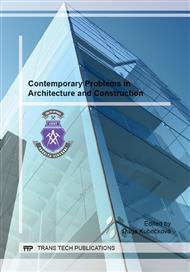p.451
p.457
p.463
p.472
p.478
p.484
p.491
p.495
p.501
Prediction of the Erosive Processes in the Corridor of Baku-Tbilisi-Ceyhan Oil Pipeline and Development of Methods to Design the New Engineering Environmental Protection Measures
Abstract:
The aim of the study is to identify the areas over the mountain slopes along the international Baku-Tbilisi-Ceyhan oil pipeline corridor highly sensitive to erosion, and to evaluate and predict them by considering the topographic, geological, hydrological, hydraulic and climatic factors of the mountain slope, which are the main determinant of water erosion. Aiming at alleviating the erosive processes in the oil pipeline corridor, the new structures of the resource-saving engineering measures of the environmental protective structures are proposed, with the priorities of their scientific-technical novelty evidenced by the relevant patents of Georgia and Russia. The methods to design bunds with the polyethylene bags filled with ground and secondary vehicle tires as anti-erosive measures are proposed.
Info:
Periodical:
Pages:
478-483
Citation:
Online since:
October 2014
Authors:
Price:
Сopyright:
© 2014 Trans Tech Publications Ltd. All Rights Reserved
Share:
Citation:


